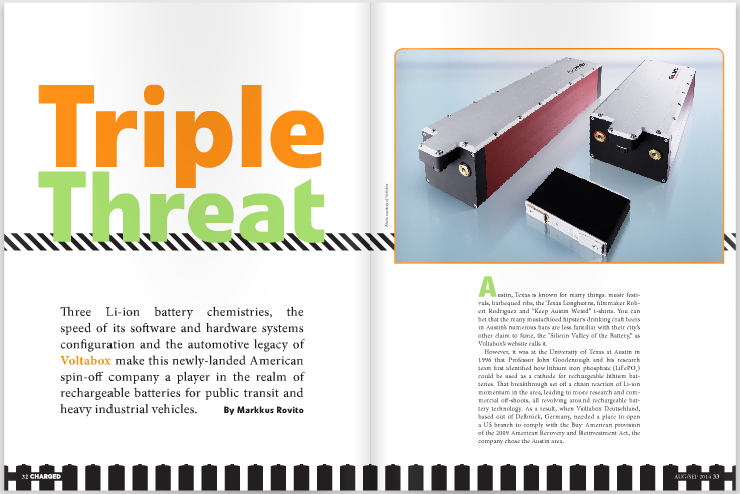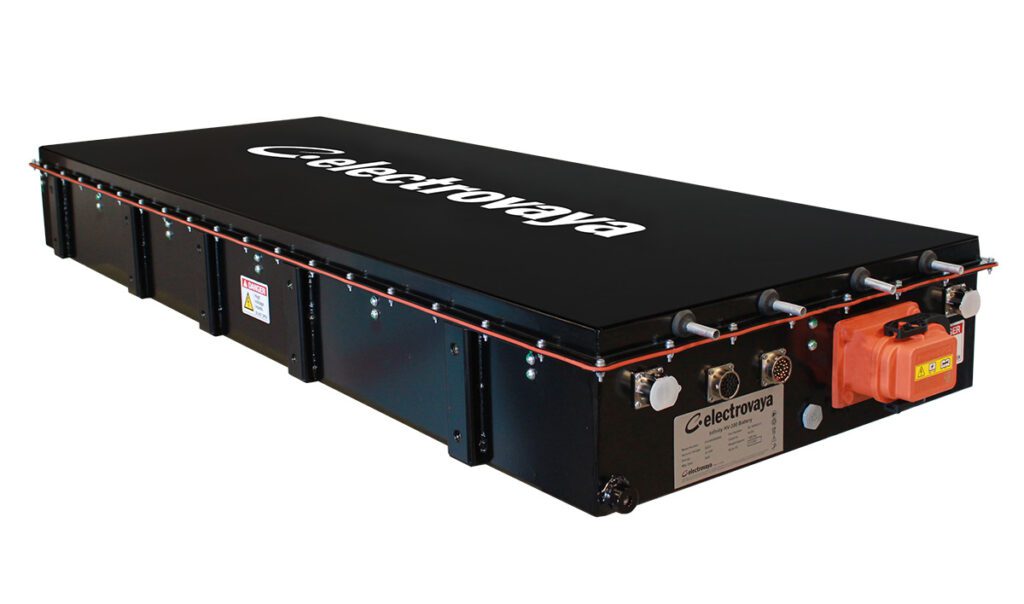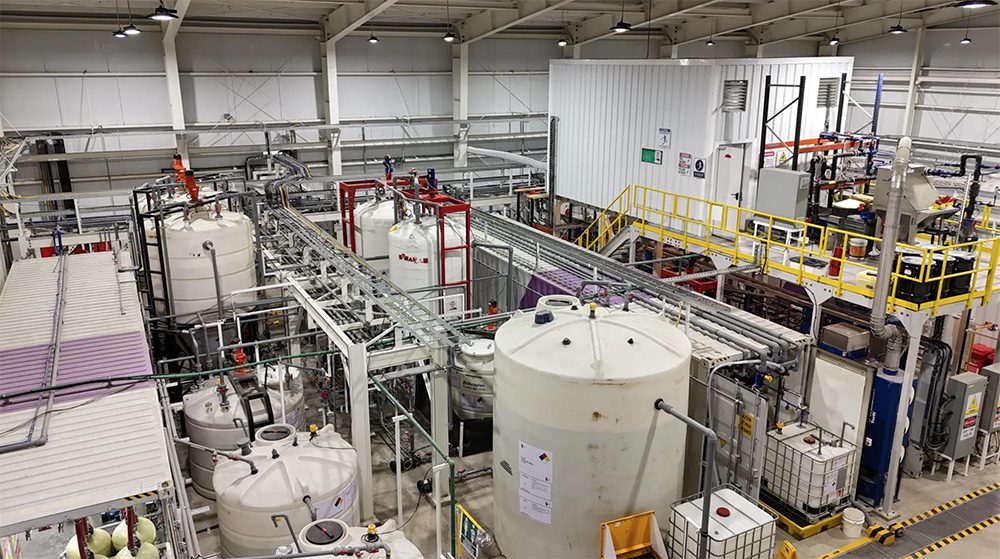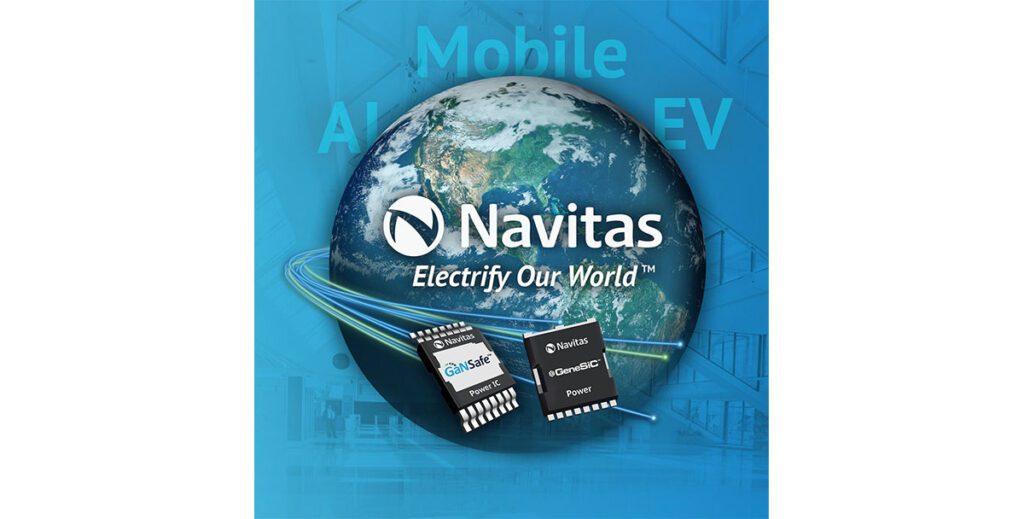Three Li-ion battery chemistries, the speed of its software and hardware systems configuration and the automotive legacy of Voltabox make this newly-landed American spin-off company a player in the realm of rechargeable batteries for public transit and heavy industrial vehicles.
Austin, Texas is known for many things: music festivals, barbequed ribs, the Texas Longhorns, filmmaker Robert Rodriguez and “Keep Austin Weird” t-shirts. You can bet that the many mustachioed hipsters drinking craft beers in Austin’s numerous bars are less familiar with their city’s other claim to fame, the “Silicon Valley of the Battery,” as Voltabox’s website calls it.
However, it was at the University of Texas at Austin in 1996 that Professor John Goodenough and his research team first identified how lithium iron phosphate (LiFePO4) could be used as a cathode for rechargeable lithium batteries. That breakthrough set off a chain reaction of Li-ion momentum in the area, leading to more research and commercial off-shoots, all revolving around rechargeable battery technology. As a result, when Voltabox Deutschland, based out of Delbrück, Germany, needed a place to open a US branch to comply with the Buy American provision of the 2009 American Recovery and Reinvestment Act, the company chose the Austin area.
By early September, Voltabox was scheduled to have a rented facility in greater Austin producing its modular iron-phosphate, lithium-titanate (LTO) and nickel-manganese-cobalt-oxide (NMC) Li-ion batteries for its US municipal and commercial customers. The rental facility will allow them to transition to its own $6-million, 23,000-square-foot plant that is currently in Phase I of completion and is scheduled to go online in March 2015 in Cedar Park, Texas, 20 miles from downtown Austin.

The Buy American provision requires that any financial assistance provided under the American Recovery and Reinvestment Act goes to purchase building materials and other manufactured goods from the USA. Because Voltabox concentrates on rapidly configurable modular battery packs for large-format, heavy-duty vehicles that serve in public transit, commercial fleets and in-house pallet-lifting vehicles, many of its customers, such as transit authorities in US cities, need their parts to be American-made. With its new Austin manufacturing base, Voltabox can now serve orders such as their recent deals to supply the cities of Seattle, San Francisco and Dayton, Ohio with battery packs for trolley buses. Besides that, having a manufacturing facility within the central longitude of the US makes shipping its batteries more cost-effective.
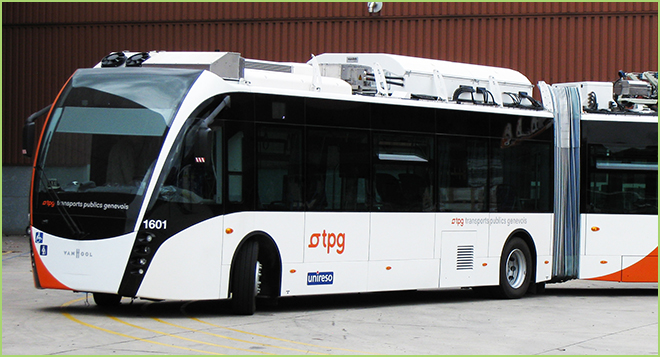
Voltavantages
There are several selling points that Voltabox can offer potential customers, most prominently the speed and flexibility with which the company can configure and deliver its modular battery systems. The flexibility comes from offering three different battery chemistries, as well as both cylindrical and prismatic cell packaging, configured modularly for adapting to varying size requirements.
Voltabox chooses products from a variety of top-notch cell makers, for example the larger-format prismatic Samsung NMC cells. “These cells are in use in the BMW i3 vehicle, the brand-new sport coupe i8, and the Porsche 918 super sport vehicle,” said Juergen Pampel, Voltabox’s CTO. “We use exactly the same cells from Samsung.”

Paul Malone, Voltabox’s Vice President of Marketing and Sales, elaborated on approved cell suppliers, including K2 Energy, A123, Toshiba and Samsung. “Our expertise is we provide the whole lithium battery system, which includes the enclosure, the battery management system [BMS] and thermal management system, which provides a total solution for hybrid electric and full electric vehicles.”
Creating not the cells, but the finished modular battery packs, is a highly automated process that Voltabox can fulfill both in Germany and now in its new Austin-area facilities. With a combination of its software configuration tool and its highly adaptable manufacturing, Voltabox believes it can deliver a price estimate for its customers, as well as the finished product, faster than its competitors.
“We developed our own software configuration tool to get a quotation for the client on new projects,” Klaus Frers, Voltabox’s CEO, said. “They may say, ‘we have this application for a battery system. We need a certain voltage level; we have these duty cycles, so we think we need a capacity overall from 52 kWh, and we have this amount of space of available in our car.’ And from this basic information, we can feed our configuration tool very easily and quickly. It’s like what you do to configure a car online. You choose the color, the rims, and this or that. That’s similar to what we’re doing. We feed the software with base data, and then we get a first technical concept and a first indicated cost. The software itself decides, depending on the base data, which is the best module for a particular use and the given packaging space. We see the weight of the new system, how many of our battery modules have to be inside, the length, width and height, and so on. This makes us quite fast. We are able to come back to our customers within a few hours to provide a first quotation for what they ask. This shortens the time extremely.”
The second half of Voltabox’s rapid delivery equation comes in its automated production lines that build a battery module up from a single cell and then add the electronics and the BMS.
“This is more or less fully automatic,” Frers said. “Then to create the customer-specific battery packs from these battery modules, we have highly-skilled people who create tailor-made battery solutions. These people build the packs for the trolley buses in Seattle, for fork-lifts to be used in Houston and so on.”
Voltabox wouldn’t go into specifics of the exact capacity for its new Texas facilities, but Rick Herndon, Voltabox’s COO, did say the company can produce “thousands” of modules a year on its automated lines, and that the packs they build vary greatly in terms of modules per pack.

“A typical amount in some cases is around 30 to 50 modules, but we have in other cases some hundreds of modules per pack,” Pampel said. “We are working on other projects for several thousands, but in every case, we use our standard modules from our automated lines.”

Battery chemistries
Voltabox’s three lithium battery chemistry types offer different advantages and/or different cell types. For example, its lithium-iron-phosphate (LiFePO4) cells claim no possible thermal runaway, high cycle stability (up to 4,000 cycles at 80% depth of discharge, high temperature range (-20 to 60° C), energy density of 125 Wh/kg, efficiency of up to 95%, low self-discharge rate, and small amount of rare earth elements needed. By comparison, lithium-nickel-manganese-cobalt-oxide (LiNMC) cells offer high cycle stability (up to 5,000 cycles at 80% depth of discharge), temperature range of 0 to 50° C, energy density of 127 Wh/kg, efficiency up to 95%, and also a low self-discharge rate.
“For certain applications, we have certain duty cycles to fulfill, and having some options available is always easier,” said Pampel. “One customer asked us ‘would it be possible to get a battery system made for up to 10 charging cycles a day, but also with a lifetime for the whole battery system of about six, eight or ten years?’ That means you would need a cell that can do 10,000, 15,000 or even 18,000 cycles. Nowadays that is possible with lithium-titanate oxide cells. We created a modular system to build ultra-long-life battery packs, based on lithium-titanate oxide. In most cases we do this with stainless steel housings, but we also use aluminum housings, and for small battery solutions and certain applications we’re using plastic materials for the outer containments.”
Pampel also sees the use of three different battery chemistries as having a good business angle to it – it lets the company speak to many different cell suppliers and have high-grade cells to offer for every configuration. “Our goal is to position ourselves in the market so we are talking directly with the likes of Samsung, Toshiba, A123 and K2 Energy,” he said. “Our task is not to purchase from distributors – we are the ones who will talk directly to the huge, strong, established cell manufacturers. That guarantees that we will have the best quality of cells available, and get direct support from the R&D people at each company as it’s needed. It’s a good thing to purchase directly.”
While the batteries for Voltabox’s current trolley bus project have air-cooling systems, the company can provide either liquid cooling or air cooling on any of its cylindrical cell or prismatic cell modules, depending on the requested application.
paragon AG
Besides speed and flexibility, Frers believes Voltabox possesses one more key advantage that other battery producers cannot match easily, if at all. That is the legacy of knowledge and experience that comes from its parent company, paragon AG, which has been a Tier 1 automotive supplier to premium automakers such as Volkswagen, Porsche, Audi, BMW and Daimler for more than 25 years. Both Voltabox Deutschland and Voltabox of Texas are wholly owned subsidiaries of paragon. They spun off from paragon earlier in 2014, and they stem from paragon’s former electromobility division that was formed in 2010 to focus on lithium battery packs.

“Because of our background coming from paragon, an automotive supplier since 1988, we have a huge knowledge in doing electronic hardware and software systems to be used in vehicles,” Frers said. “All of my engineers for the electronics, and all of my software developers, have known these areas for years, so it’s nothing new for them. That is important, because modern battery systems based on lithium-ion cell chemistries have to interact with the vehicle electrical system via CAN bus and have to be controlled by a BMS, the device controlling and balancing the cells to ensure that each, in comparison to the stable cells, is on the same level. That is something we just can do because it’s part of our broad know-how in doing enhanced electronic and software-driven systems for more than 26 years.”
“Most long-established battery manufacturers are coming from the lead-acid technology,” Frers said. “In those days, 20 or 30 years ago, it was not necessary to have experience with advanced electronics for battery controls and system integration in electric vehicle architectures. Our success in Germany is based on what we can offer in comparison to a long-established battery manufacturer. Most of them came from lead-acid technology, and they struggle to provide modern and reliable lithium-ion-based battery packs. These are very special skills, and we have them.”
This article originally appeared in Charged Issue 15 – August/September 2014







